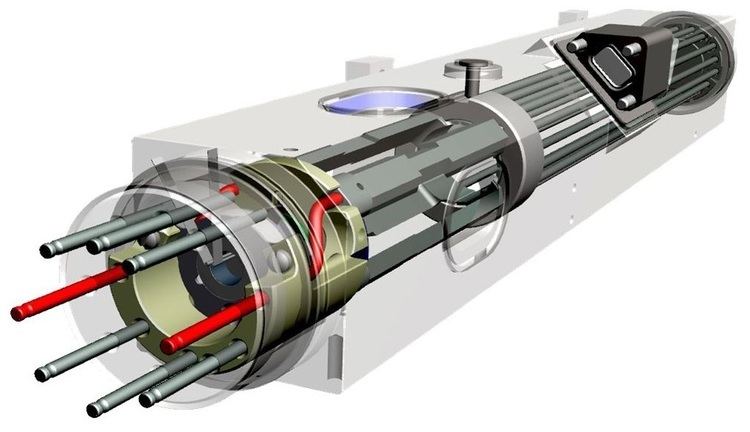 | ||
The Deep Space Atomic Clock (DSAC) is a miniaturized, ultra-precise mercury-ion atomic clock for precise radio navigation in deep space. It is orders of magnitude more stable than existing navigation clocks, and has been refined to limit drift of no more than 1 nanosecond in 10 days. It is expected that a DSAC would incur no more than 1 microsecond of error in 10 years of operations. It is expected to improve the precision of deep space navigation, and enable more efficient use of tracking networks. The project is managed by NASA's Jet Propulsion Laboratory.
Contents
Overview
Current ground-based atomic clocks are fundamental to deep space navigation; however, they are too large to be flown in space. This results in tracking data being collected and processed here on Earth (a two-way link) for most deep space navigation applications. The Deep Space Atomic Clock (DSAC) is a miniaturized and stable mercury ion atomic clock that is as stable as a ground clock. The technology could enable autonomous radio navigation for spacecraft's time-critical events such as orbit insertion or landing, promising new savings on mission operations costs. It is expected to improve the precision of deep space navigation, enable more efficient use of tracking networks, and yield a significant reduction in ground support operations.
Its applications in deep space include:
Principle and development
Over 20 years, engineers at NASA's Jet Propulsion Laboratory have been steadily improving and miniaturizing the mercury-ion trap atomic clock. The DSAC technology uses the property of mercury ions' hyperfine transition frequency at 40.50 GHz to effectively "steer" the frequency output of a quartz oscillator to a near-constant value. DSAC does this by confining the mercury ions with electric fields in a trap and protecting them by applying magnetic fields and shielding.
Its development will include a test flight in low-Earth orbit in March 2017, while using GPS signals to demonstrate precision orbit determination and confirm its performance in radio navigation. It will be deployed as part of the U.S. Air Force's Space Test Program 2 (STP-2) mission aboard a Space X Falcon Heavy rocket.
